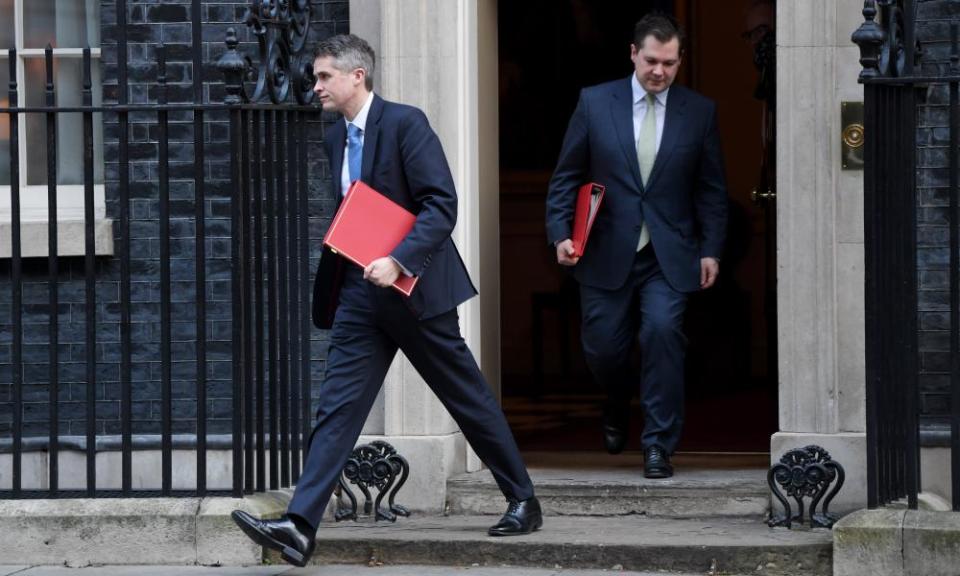Boris Johnson’s bold reshuffle is a show of strength – and a sign of pressure

When Boris Johnson reshuffled his cabinet in February last year, it did not go as planned. Despite Johnson still riding high after his election victory, ministers complained about No 10’s abrasive approach, supporters said promises of jobs made to them during the leadership campaign hadn’t been delivered, and MPs from the older intakes smarted at the promotion of their younger colleagues ahead of them.
The whole exercise proved so bad for party morale that for more than a year Johnson and his chief whip have been firmly put off carrying out another. Stories of imminent reshuffles have come and gone with nothing to show for them. Those who argued in favour of one were told by No 10 aides: “Good luck convincing the prime minister.”
It’s why the first reshuffle since then is so significant. It’s not just that it has finally happened – it’s how bold it was. Despite long-held concerns about party management, Johnson did not shy away from difficult decisions. Instead, he opted for what one adviser describes as a “very punchy” reshuffle – sending old friends and government loyalists, as well as potential troublemakers, to the backbenches.
The prime minister demoted his foreign secretary, Dominic Raab, against his wishes, sacked Gavin Williamson despite warnings he could cause Johnson trouble out of cabinet, and showed the door to one of his early leadership backers in the form of Robert Jenrick.
What’s driving the approach? “He’s in world king mode,” says one adviser, in reference to Johnson’s ambition at age four to be king of the world. Another describes the prime minister as “high on power”.
After Johnson won the backing of his party to break a manifesto pledge and raise tax for the NHS and social care despite general misgivings, he has become surer of himself. MPs spy a sense of invincibility after this display of strength.
There could also be another factor at play when it comes to why Johnson felt able to oust the ministers he did. While Williamson was widely expected to leave education, many MPs thought he would be found another role, such as leader of the house, on the grounds that he is an effective organiser, and as former chief whip has a ready knowledge of inner-party wrangling and secrets.
Only this is not the potential threat it once was. Aides believe that recent events involving his former Downing Street aide Dominic Cummings have given him confidence that he can risk it. “He’s had someone who knows where the bodies are buried in Dom [Cummings] out of government and trying to cause him problems for months now, but he is still in Downing Street and in control,” says one government adviser.
While the last reshuffle took place when the Vote Leave contingent in No 10 were at the peak of their power, this one saw Johnson come up with a plan with the help of his new chief of staff, Dan Rosenfield. Johnson has been considering a reshuffle since the start of the summer, but it stayed under wraps owing to the fact that only Johnson’s inner circle in Downing Street were privy to the plans up until the last minute, when ministers’ diaries had to be cleared and events cancelled.
The purpose of it is clear – to drive reform. The prime minister is acutely aware that as things stand he has little in the way of a domestic agenda. It’s in part what the social care policy announcement was meant to address.
It’s not just Covid that has meant schemes such as the “levelling-up” agenda have struggled to get off the ground; there has also been an issue on policy and how ministers drive through change.
While Johnson is often criticised for valuing loyalty over competence, the reshuffle was notable for how it challenged that assertion. Those ministers viewed to be the worst performers – such as Williamson, Jenrick and Raab – were shown the door or demoted. Though loyalty is still a requirement, the ministers brought in were picked first and foremost for an ability to address the government’s perceived shortcomings. Michael Gove’s move to housing secretary and its role in fleshing out “levelling up” – while a demotion on paper – is the clearest sign yet that Johnson knows he needs to have more to show in these areas at the next election.
“Michael is a problem-fixer,” says one minister. “You send him in when things are bad.” The hope is that he can find a way to drive through planning reform that can win Tory backing.
Meanwhile, Nadhim Zahawi’s appointment in education is an attempt to tackle a Tory weak spot. In Downing Street, there is concern that the Tories could be attacked on education in an election campaign. Zahawi’s appointment is meant to send a message of competence – his work as vaccines minister means he is viewed as one of the members of this government who can deliver.
Of course, there’s still room for things to go wrong. The reshuffle isn’t over, with junior ministerial appointments to follow. When it comes to the parliamentary party, these are the roles that have the potential to cause the most unrest. This is where more MPs believe they are on the brink of promotion than there are jobs to give.
But by pressing ahead with this reshuffle, Johnson has for now put himself in a stronger position. The constant threats of one as a way to bounce MPs into action were starting to have a debilitating effect on the government. MPs were growing agitated over when it would happen, while ministers were finding it harder to lead their departments. As a result of the reshuffle, Johnson has a team he has confidence in to implement the government’s agenda – but the pressure is on to now show he can deliver.
Katy Balls is the Spectator’s deputy political editor

 Yahoo Movies
Yahoo Movies 